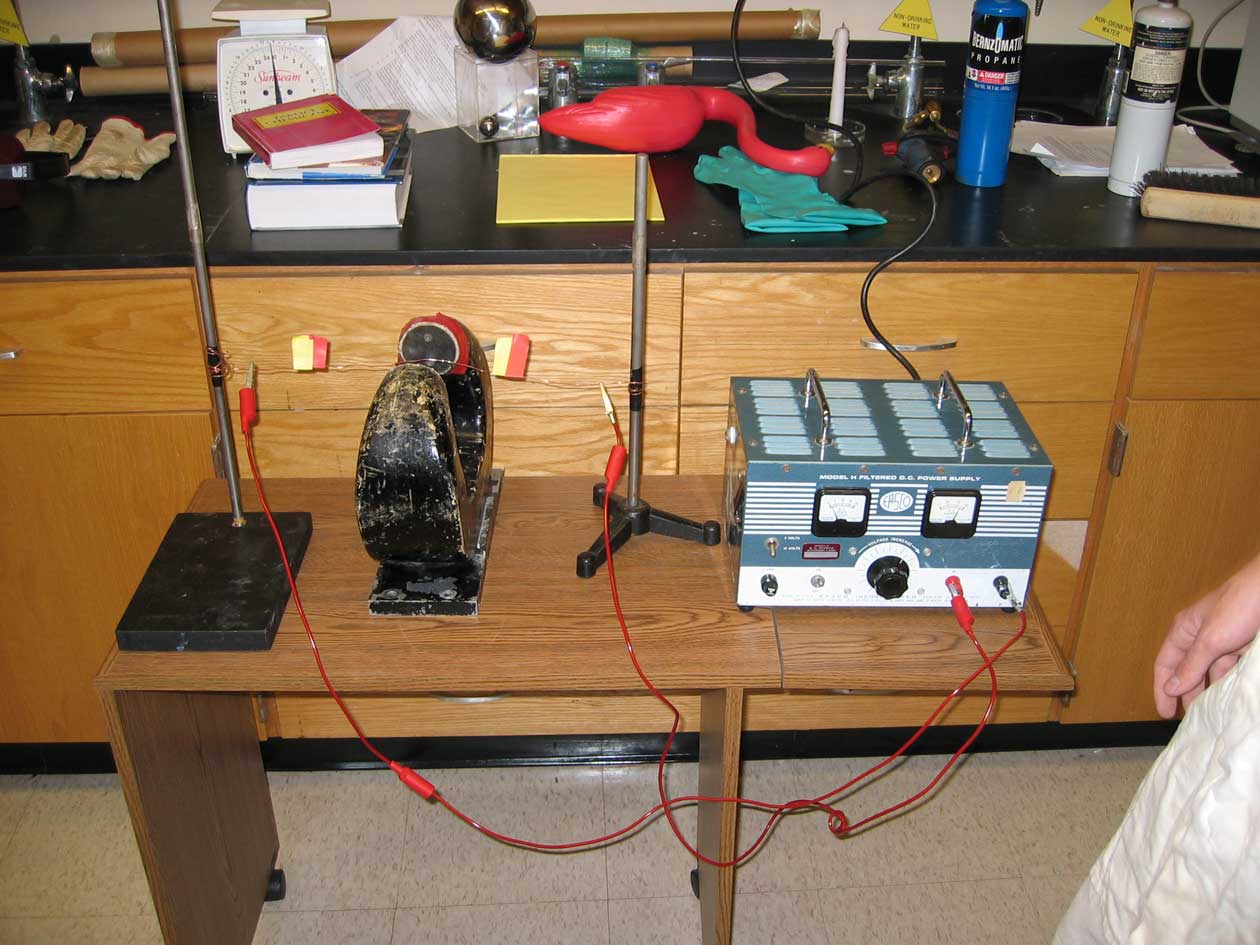The magical force behind mass spectrometry
 A wire is placed in a magnetic field. Voltage is applied, causing electrical current to flow through the wire. The wire is pushed aside by an invisible force.
A wire is placed in a magnetic field. Voltage is applied, causing electrical current to flow through the wire. The wire is pushed aside by an invisible force.
Ingredients: powerful magnet, DC power supply, copper wire
Procedure: A complete recipe follows.
1. Draw a copper wire perpendicular to the field of a permanent magnet. Add tape to the wire, to help in observing its movement.
2. Attach a DC power supply to opposite ends of the wire.
3. Apply voltage to the wire and observe its movement.
4. Reverse the leads connecting the wire to the power supply. Apply voltage and observe the wire's movement.
Understanding: The electrical current flowing through the wire is perpendicular to the magnetic field. The force that acts on the wire is found to be perpendicular to both the magnetic field and the direction of the wire! This is the magical Lorentz force, described by Ampere's Law. When the leads to the DC power supply are reversed, the direction of the current is reversed and the force acts in the opposite direction.
The force that moves our wire is the same force that makes mass spectrometry possible. In mass spectrometry, a current of ionized atoms or molecules flows through a magnetic field. The Lorentz force acts on the ion, "pushing" the ion in a direction perpendicular to its motion. The amount that the ion is deflected will depend on its mass. If we know the charge, its velocity, the strength of the magnetic field, and the amount the ion is deflected, we can determine the mass of the ion. That is the principle of mass spectrometry, which is routinely used to make highly precise estimates of the masses of atoms and molecules.
What will happen if the wire is connected to an AC power supply?
Missing mass
Question: The mass of a mole of atoms of boron in the correct natural abundance is 10.81 g/mol but the mass of a collection of protons, neutrons, and electrons in the same abundance has a mass of 10.89 g/mol. What gives?We can find the same problem in our method for computing the mass of a single atom of a single isotope. If we consider a single atom of 4He we find that it has a mass of 6.64648 x 10-27 kg. However, when we add the masses of the subatomic particles we find
2 mp + 2 me + 2 mn = 6.69693 x 10-27 kg
As in the case of boron, the sum of the masses of the subatomic particles is greater than the mass of the atom that they compose. How can we understand these results?